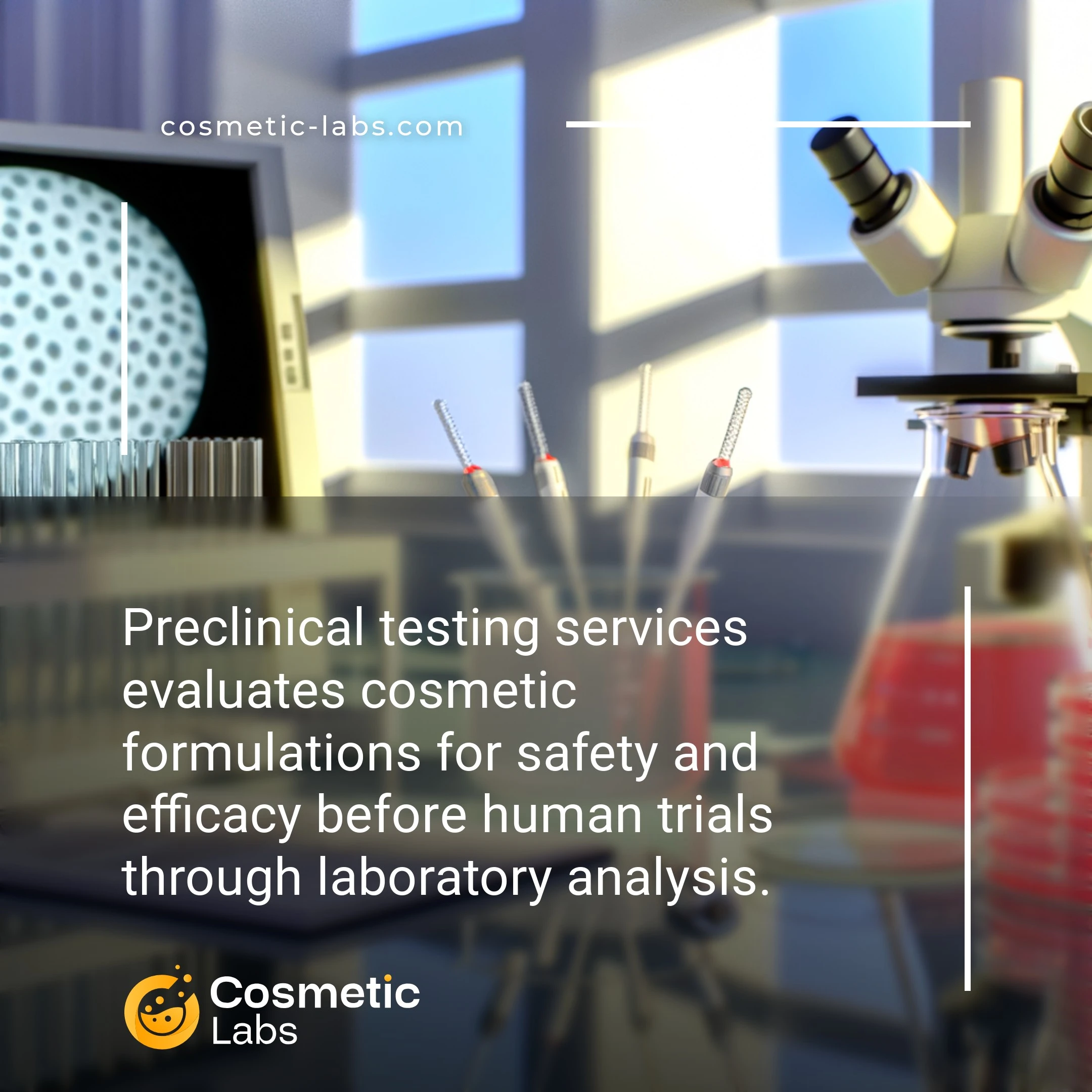Preclinical Testing Services for Beauty Product Development

What is Preclinical testing?
Preclinical testing services are laboratory evaluations that assess cosmetic formulations before human trials, using in vitro methods like cell cultures and tissue models to predict skin reactions, irritation potential, and product safety. These tests help cosmetic labs validate ingredient compatibility and formulation stability, giving brands the data needed to move forward with confidence while reducing development risks and regulatory hurdles.
Why do you need this service?
Beauty brands partner with cosmetic labs to conduct safety assessments and irritation testing before launching new formulations, ensuring products meet regulatory standards across different markets. Labs also perform stability studies that track how active ingredients perform over 12-24 months, helping companies validate shelf life claims and optimize packaging choices for retail distribution.
Who provides Preclinical testing services?
All cosmetic labs providing Preclinical testing services
There is no company providing these services at the moment.
Preclinical Testing Services
Preclinical testing services validate your cosmetic formulations before they reach consumers, helping you identify potential issues and optimize product performance. These laboratory assessments cover everything from basic stability checks to advanced biocompatibility studies that support your product claims.
Safety and Compatibility Assessment
Labs run patch testing and irritation studies to evaluate how your products interact with skin. These tests help you understand potential allergic reactions and determine safe usage levels for active ingredients. Most facilities offer both in-vitro and human volunteer studies depending on your product type and target market.
Key safety evaluations include:
- Dermal irritation and sensitization testing
- Ocular irritation assessment for eye-area products
- Phototoxicity testing for sun-exposed formulations
- Microbial challenge tests for preservation efficacy
Performance and Efficacy Validation
Performance testing proves your product claims through measurable results. Labs use specialized equipment to test moisturizing effects, anti-aging benefits, and color stability over time. These studies generate the data you need for marketing claims and regulatory submissions.
Common efficacy tests measure:
- Skin hydration levels using corneometer readings
- Transepidermal water loss for barrier function
- Collagen production markers for anti-aging claims
- SPF values and broad-spectrum protection
Connect with experienced testing labs on our platform to discuss your specific preclinical requirements and timeline needs.
6 subcategories of Preclinical testing services
There are no results matching your search
Practical Applications of Preclinical Testing Services
Beauty brands rely on preclinical testing applications to validate product safety and efficacy before market launch, reducing regulatory risks and consumer complaints.
Safety Assessment for New Formulations
Labs conduct cytotoxicity assays using HaCaT keratinocytes to evaluate skin irritation potential within 72 hours. These cell-based models predict human skin responses with 85% accuracy compared to traditional animal testing. Patch testing protocols assess sensitization risks through LLNA alternatives, identifying allergenic compounds before consumer exposure.
Phototoxicity screening uses 3T3 NRU assays to detect UV-induced reactions in sunscreens and anti-aging products. Results guide formulation adjustments and ingredient concentration limits for safe daily use.
Efficacy Validation for Marketing Claims
Antioxidant capacity testing measures DPPH scavenging activity and ORAC values to support anti-aging claims. Collagen synthesis assays quantify fibroblast stimulation rates, providing data for wrinkle reduction promises. Moisturization studies track transepidermal water loss over 24-hour periods.
Antimicrobial testing validates preservative systems against common contaminants like Pseudomonas aeruginosa and Candida albicans. Challenge tests determine minimum inhibitory concentrations and shelf-life stability under various storage conditions.
| Test Type | Timeline | Key Metrics | Regulatory Use |
|---|---|---|---|
| Cytotoxicity | 3-5 days | Cell viability % | Safety dossier |
| Sensitization | 7-14 days | EC3 values | CPSR compliance |
| Efficacy | 2-4 weeks | Activity units | Marketing claims |
| Stability | 3-6 months | Microbial counts | Shelf-life validation |
Ready to validate your formulation’s safety and efficacy? Connect with experienced cosmetic labs on our platform to discuss your preclinical testing requirements and timeline.

